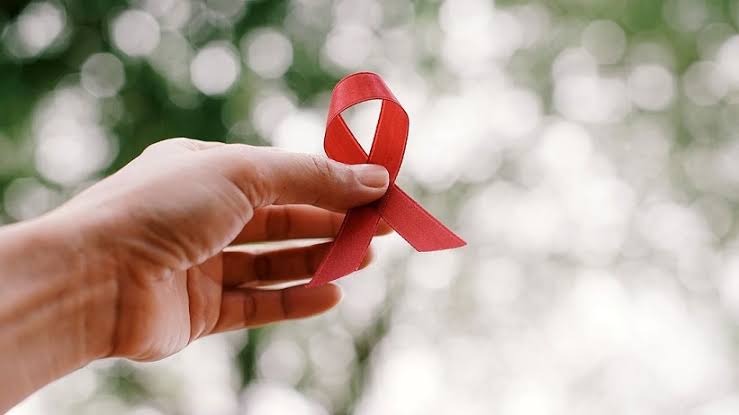Dr. Sharmeen Mushtaq
HIV/AIDS in Jammu and Kashmir (J&K) remains a silent epidemic, both under-discussed and steadily escalating. Since 1998, nearly 7,000 cases have been reported, with over 1,500 lives lost, leaving thousands to battle not only the disease itself but also a deeply ingrained societal stigma. Despite these alarming statistics, the region’s response to the HIV/AIDS crisis has been fragmented, marked by cycles of denial and insufficient action.
A Grim Statistical Reality
The numbers surrounding HIV/AIDS in J&K paint a stark and sobering reality. As of October 2024, a total of 6,995 individuals in the region have tested positive for HIV, with 1,569 deaths reported. While 3,814 individuals are currently receiving life-saving Antiretroviral Therapy (ART), the disease continues to take a toll on the population, as 406 people have dropped out of follow-up care. This drop-off is a direct consequence of the stigma, fear, and misinformation that persist, preventing individuals from seeking timely treatment and care.
The statistics become even more concerning when broken down regionally. Government Medical College (GMC) Jammu, which serves as the primary treatment center for the region, has reported the highest number of cases—5,379 cases with 1,372 deaths. Sher-i-Kashmir Institute of Medical Sciences (SKIMS) Srinagar has recorded 851 cases and 33 deaths, while ART Kathua has reported 465 cases and 38 fatalities. These numbers represent far more than mere statistics; they reflect the untold personal suffering of individuals whose lives have been upended by the disease, compounded by a lack of adequate support systems in the region.
The Silent Epidemic of Stigma
While HIV/AIDS is undoubtedly a medical condition, stigma remains its most enduring side effect. In J&K, an HIV-positive diagnosis often leads to ostracism, social rejection, and loss of livelihood—consequences that many fear even more than the disease itself. This fear of societal judgment discourages many from seeking testing or treatment, exacerbating the spread of the virus.
Much of the HIV crisis in J&K is linked to external migration. Migrant workers, students, and travelers unknowingly bring the virus back to the region, adding complexity to a society unprepared to respond with empathy and understanding. Intravenous drug use, a significant transmission route, also contributes to the epidemic’s spread. Many individuals, unaware of their HIV status, inadvertently infect their spouses and others, further amplifying the epidemic’s reach.
However, amid this grim reality, there are stories of resilience. A woman in her mid-40s, who contracted HIV through unprotected sex within her marriage, exemplifies the strength and perseverance needed to navigate this crisis. Diagnosed in 2000, she believes the virus entered her life in 1999. Her husband, unaware of his status, passed away from AIDS-related complications in 2003. Despite the societal judgment she faced, she has emerged as a strong advocate for awareness, education, and change. Her story, along with countless others, highlights the importance of resilience in the face of overwhelming challenges.
Missed Opportunities in Prevention
Efforts to combat HIV/AIDS in J&K have been inconsistent at best. The Jammu and Kashmir AIDS Control Society (JKSACS), established in 1998, was intended to centralize and coordinate efforts to tackle the growing epidemic. However, the rising number of cases underscores significant gaps in implementation. Awareness campaigns, though initiated, remain sporadic and often fail to penetrate rural areas where myths and misconceptions about HIV persist.
The question remains: How many people in J&K truly understand the difference between HIV and AIDS? How many know that ART can transform HIV from a deadly disease to a manageable condition? The answers to these questions reveal the deep ignorance that continues to fuel the epidemic.
World AIDS Day 2024: A Glimmer of Hope?
On December 2, 2024, GMC Srinagar observed World AIDS Day with the theme, “Take the Rights Path: My Health, My Right!” The event, organized in collaboration with JKSACS, brought together medical professionals, policymakers, and students to renew their commitment to combating HIV/AIDS.
Prof. (Dr.) Iffat Hassan Shah, Principal of GMC Srinagar, emphasized the importance of prevention, early detection, and sustained treatment efforts. Leading experts, including Prof. (Dr.) S. Muhammad Salim Khan, shared global insights, while local challenges were highlighted by Imtiyaz Khan, Assistant Director of JKSACS. The event also featured creative initiatives such as poster exhibitions and quiz competitions aimed at engaging the public and combating misinformation.
Despite these efforts, the question remains whether such events will lead to meaningful, sustained action or if they will simply fade into the background, as previous efforts have.
What Needs to Be Done
The HIV/AIDS crisis in J&K requires a comprehensive and sustained response. Awareness campaigns cannot be limited to annual observances like World AIDS Day; they must be integrated into everyday conversations and reach every corner of the UT. Social media, schools, and community gatherings should be leveraged to educate the public, dispel myths, and reduce stigma surrounding the disease.
Testing facilities need to be expanded, particularly in rural areas, to ensure that individuals at risk are identified and given timely care. Furthermore, targeted interventions for high-risk groups, such as intravenous drug users and migrant workers, are essential. Needle-exchange programs, condom distribution, and counseling services should be introduced and scaled to mitigate transmission risks.
Collaboration between the government, civil society organizations, and local leaders is crucial for creating lasting change. Only through a collective effort can the deeply ingrained stigma be addressed and the fight against HIV/AIDS won.
A Call to Action
The HIV/AIDS crisis in J&K is not just a health issue; it is a reflection of societal failure. Each statistic represents a life disrupted by the virus and the community’s neglect. While the tools and knowledge to combat HIV/AIDS are available, the real challenge is whether we care enough to use them effectively.
Fighting HIV/AIDS is not simply about controlling a disease; it is about reclaiming our humanity, challenging ignorance, and overcoming apathy. The battle can be won—but only if we commit to it wholeheartedly.
(Note: The author is a medical officer working in a government hospital.)


